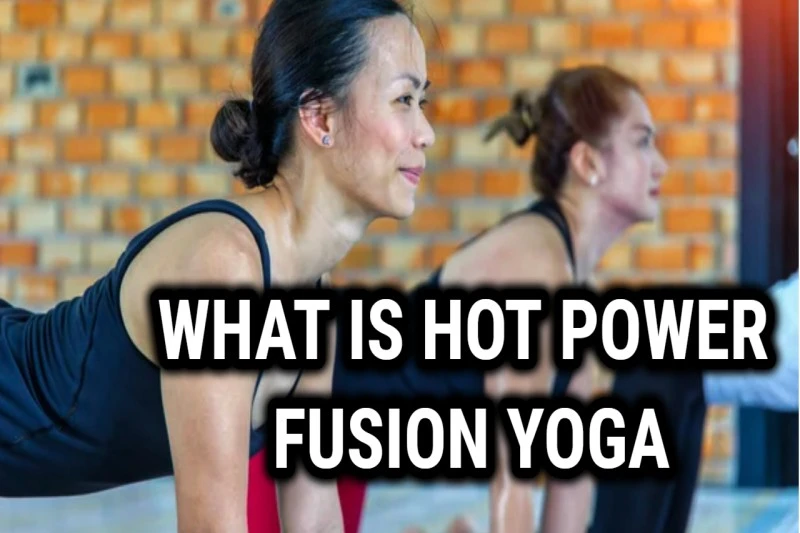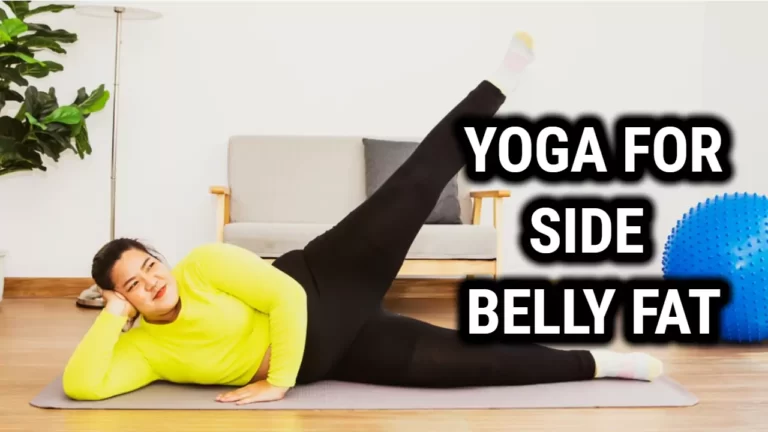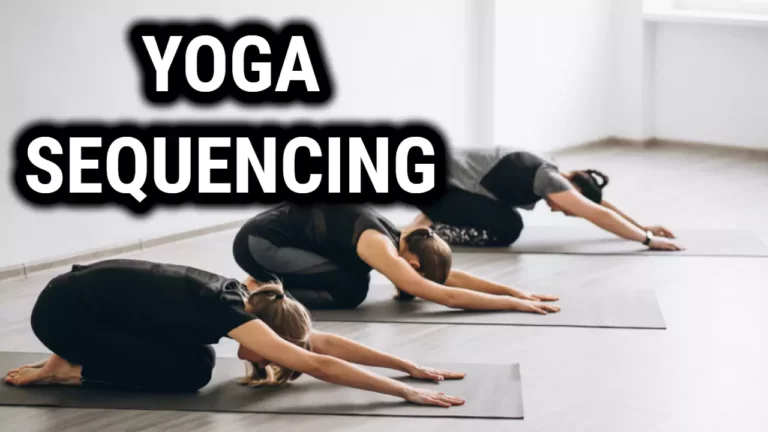What is Hot Power Fusion Yoga (HPF)

Have you ever wondered what hot power fusion yoga is all about? With a combination of dynamic flows and postures, this unique form of yoga has become increasingly popular in recent years. It’s an intense workout that combines the best of both worlds: the healing effects of yoga and the intensity of a high-energy workout. This article will explore what hot power fusion yoga is, why it’s becoming so popular, and how to get started with it.
The first thing to know about hot power fusion yoga is that it’s different from traditional forms of yoga. It combines elements from various yoga styles such as vinyasa flow, ashtanga, and hatha and adds more challenging postures like arm balances and advanced backbends into the mix. This creates a more intense practice that will help you strengthen your muscles and increase your cardiovascular endurance. Plus, since it’s done in a heated room or studio (around 95-100 degrees Fahrenheit), it can help detoxify your body while improving flexibility at the same time.
For people looking for something outside their comfort zone or wanting to challenge themselves in new ways, hot power fusion yoga is definitely worth trying out. It provides a great way to push yourself physically while still allowing time for relaxation and reflection afterwards. So if you’re interested in taking your practice to the next level or just want something new to try, hot power fusion yoga might be perfect for you!
Benefits Of Hot Power Fusion Yoga
Savoring the sultry sensation of hot yoga, fusing it with invigorating poses and movements, Hot Power Fusion Yoga is a type of physical activity that has recently become increasingly popular. Through this form of yoga, individuals can enjoy the blissful benefits of integrating their body and mind for their health and wellbeing.
The heat from the hot yoga helps to reduce stress levels while deepening stretches and increasing flexibility. This in turn can help improve posture, increase strength, build balance, and create a heightening sense of presence. The fusion aspect of HPF Yoga allows practitioners to gain greater access to the power of their own bodies while they practice postures that are both dynamic and calming.
Whether you are looking to experience a whole-body workout or simply prefer to relax into longer holds with your breath, this style of yoga provides something for everyone. Plus, it’s an enjoyable way for practitioners to experience both movement and stillness in one practice – allowing them to truly tune into themselves on every level.
With its unique combination of hot yoga with dynamic poses, HPF Yoga offers a multitude of mental and physical benefits that make it an incredibly enjoyable experience. From here we will explore some of the postures used in HPF Yoga so you can get a better understanding of how this type of yoga works within each pose.
Postures Used In Hpf Yoga

HPF Yoga combines the heat and intensity of hot yoga with the strength, power, and flow of Vinyasa yoga. It is a form of Power Vinyasa that emphasizes building strength through movement, rather than holding static postures for long periods. By combining these two styles, practitioners are able to challenge themselves physically while also getting the calming benefits of hot yoga.
In HPF Yoga classes, a variety of postures are used to create an effective workout while also deepening one’s overall connection to their practice. Some popular postures used in HPF Yoga include Plank Pose, Warrior I Pose, and Downward Dog Pose. These poses help to strengthen core muscles as well as improve balance and posture. Additionally, they can help increase flexibility and range of motion in the body.
The combination of hot yoga with vinyasa-style movements creates a holistic experience that can be both invigorating and deeply restorative at the same time. With its focus on dynamic sequences that build strength and endurance while still maintaining a sense of presence, HPF Yoga is an excellent way for practitioners to experience the union between mind and body in their practice.
Transitioning from this style into CorePower Yoga style classes offers even more postures that provide a powerful workout for practitioners looking to deepen their practice even further.
Corepower Yoga Style (CPY)
Under the umbrella of Hot Power Fusion Yoga and building on the foundation of HPF Yoga, CorePower Yoga style classes are a great way to take one’s practice even further. This style of yoga emphasizes intensity of power yoga and strength building through dynamic sequences that involve postures like Chaturanga, Upward Dog Pose, and Triangle Pose. By utilizing these postures in combination with deep breathing and focus on alignment, practitioners can challenge their bodies while still feeling calm and centered throughout the entire practice.
CorePower Yoga style classes are designed with core strengthening in mind. Here are some highlights of what this style offers:
• Strengthened abdominal muscles
• Improved balance and posture
• Enhanced range of motion in the body
• Greater mental clarity and focus
This style of yoga is an effective way to build heat, strength, and endurance in the body and also provides detoxifying qualities of hot yoga while still maintaining a sense of mindfulness throughout the practice. With its emphasis on breath-synchronized movement, CorePower Yoga style classes are an excellent way for practitioners to strengthen their connection to their practice while also pushing their limits physically. As practitioners progress through each sequence they will find themselves becoming stronger both mentally and physically.
The next step is to explore how modifications and props can be used to further enhance one’s HPF Yoga experience.
Also Read: Can A Beginner Do Power Yoga?
Modifications And Props For Hpf Yoga

Have you ever wondered how to make your HPF Yoga practice even more effective and enjoyable? Modifications and props can be used to add an extra layer of challenge, comfort, and customization to your practice. Here are some tips for getting started with adding modifications and props to your HPF Yoga practice.
When practicing yoga poses in a vinyasa flow, it’s important to be aware of the alignment of the body. Props like blocks or bolsters can help support the body in poses like Triangle or Extended Side Angle Pose, allowing practitioners to focus on proper alignment while still challenging their strength. Additionally, straps can be used when attempting poses such as Half Moon or Bound Angle Pose if flexibility is an issue. These props help ensure that practitioners are able to keep their postures safe and effective as they build strength and flexibility.
It’s also important to remember that modifications don’t always have to involve props—there are plenty of ways to modify a pose without them! For example, if a posture feels too intense, practitioners can opt for less advanced variations of each pose until they are ready for more challenging options. Or if a pose isn’t quite accessible due to physical limitations, practitioners might try using a chair for stability instead.
TIP: When adding modifications or props into your practice, focus on what feels best for your own individual body type and ability level—that’s what makes HPF Yoga so special! This will help ensure that you get the most out of every single session while staying safe and comfortable at all times.
Safety Tips For Practicing Hpf Yoga
Safety should always be the number one priority when it comes to practicing HPF Yoga. Here are some tips for making sure your practice stays safe and effective every time.
First, make sure you’re well hydrated before class, especially if it’s a hot yoga class. Staying hydrated is essential for helping your muscles stay cool during intense sequences, and it will help you maintain breath awareness throughout your practice. Additionally, make sure to take breaks whenever necessary, even if that means taking a few extra breaths in between poses or pausing at any point to check-in with your body.
Finally, always listen to your body first and foremost. This means being mindful of any physical limitations or injuries you may have, and respecting what feels best for your own individual body type and ability level. Modifying poses with props or opting for less advanced variations can help make sure that you stay safe during class while still getting an effective workout.
Nutrition And Hydration Needs For Practicing Hpf Yoga
Nutrition and hydration are key components to watch for any yoga practice, but especially so for Hot Power Fusion. During a HPF class, your body will be working harder than usual due to the intensity of the postures and the heat. To ensure you get the most out of your practice, it is important to stay well-fueled with healthy foods that will provide energy and sustain you throughout class.
Before class, try to opt for easy-to-digest snacks like fruits or nuts that will give you enough energy without weighing you down too much. During class, sipping on some electrolyte water or coconut water can help replenish lost fluids without having to take too many breaks. After class, replenishing your body with a protein shake or other nutrient-rich smoothie will help refuel your muscles and support proper recovery from any intense yoga postures.
By taking care of yourself before, during, and after each HPF Yoga session with proper nutrition and hydration, you’ll be setting yourself up for success in every practice!
The Importance Of Self-Care After An Hot Power Fusion Yoga (Hpf) Class

As you step off the yoga mat after a Hot Power Fusion class, it is important to take time for self-care. During an HPF class, your body has been pushed to its limits with the intense postures and heat – both of which can be physically and mentally draining. Taking a few moments to replenish yourself can help you get the most out of your practice and ensure that you are feeling your best.
Self-care after an HPF class can come in many forms. A quick meditation or relaxation exercise can help soothe tired muscles and bring much needed peace of mind. It is also helpful to rehydrate with electrolyte-rich beverages, such as coconut water or kombucha, that will replenish lost fluids and minerals. Taking a hot shower or bath afterwards can also help relax sore muscles while providing a moment of rejuvenation.
Finally, taking some time to reflect on your practice by writing down any insights or thoughts can be beneficial for tracking progress over time. This is especially useful if you are looking for ways to develop further as a yogi or want to review any challenging postures from the class. By doing this, you’ll be able to look back at your reflections and gain insight into how far you’ve come in your practice!
Common Challenges When Practicing Hpf Yoga
Practicing Hot Power Fusion yoga can be a challenging yet rewarding experience. Although the combination of power yoga and hot yoga poses can bring new levels of strength and flexibility, there are some common obstacles that yogis may face when attempting them.
One common challenge is having enough core strength to support the postures. HPF requires a lot of strength in the core and upper body muscles, so it’s important to focus on building those areas before taking on more advanced poses. As with any form of exercise, it is essential to build up gradually; overdoing it can lead to injury or fatigue.
Another difficulty is finding your breath amidst all the heat and intensity. In order to sustain an HPF practice, one must be able to stay focused on their breathing even through difficult postures. This can take time and practice but will result in better overall results from each class!
With patience and dedication, these challenges can be conquered – allowing for a deeper connection between body, mind, and breath during your HPF classes. With regular practice, you can reap the physical benefits while also finding peace in the present moment.
Frequently Asked Questions
How Often Should I Practice Hot Power Fusion Yoga?
For those new to this style of yoga, the best approach is to start slowly and increase the frequency over time. As with any exercise regimen, it’s important to listen to your body and adjust accordingly.
It’s recommended to begin by attending two or three classes per week. This gives your body time to become accustomed to the poses and postures used in this style of yoga while also allowing for rest days in between sessions. As you become more familiar with the exercises, you may decide to increase your practice frequency, potentially incorporating other forms of yoga or exercise into your routine as well.
When deciding on a frequency that works best for you, be sure to factor in other aspects of your life such as stress levels and energy reserves. If you find yourself feeling overly tired or stressed out after class, then it’s likely best for you to reduce the amount of times per week that you practice. Likewise, if you’re feeling energized and ready for more after each session, then gradually increasing the number of times per week that you attend class may be beneficial!
What Type Of Clothing Should I Wear For Hpf Class?
“Appearances can be deceiving,” so the adage goes. But when you’re talking about clothes for a hot power fusion (HPF) class, your apparel choices really matter. Wearing the wrong clothing to an HPF class is more than just uncomfortable—it could actually impede your performance and put you at risk for injury. To ensure that you get the most out of your HPF experience, it’s important to know what type of clothing to wear.
When dressing for HPF, comfort should take priority over style. Opt for lightweight fabric that won’t restrict your movements or trap sweat against your skin. Clothes should fit snugly but not too tightly—baggy clothing can get in the way during certain poses and movements. Avoid wearing any jewelry or accessories that may irritate you while working out or snag on equipment.
Choose a top and bottom that will keep you cool and allow you to move freely; tank tops, t-shirts, leggings, shorts and yoga pants are all good choices. It’s also a good idea to bring along a change of clothes for after class so you don’t have to leave feeling sticky or sweaty. By taking these simple precautions, you can make sure that your HPF experience is as enjoyable and productive as possible!
Are There Any Potential Risks Associated With Hpf Yoga?
When engaging in HPF yoga, there are some potential risks that should be taken into consideration. It is important to remember that although HPF yoga is designed to improve physical fitness and mental wellbeing, it can involve intense movement and postures that may be difficult for those with limited flexibility or strength. Therefore, those who are new to this type of exercise should ensure they get adequate instruction from a certified instructor.
There are also potential risks related to overheating due to the heated environment in which it is practiced. Overheating can lead to dehydration, muscle cramps and other heat-related health issues. To minimize these risks, it is important for practitioners to stay hydrated throughout their practice and listen closely to their bodies if they start feeling faint or dizzy during the session.
It’s essential for practitioners to be aware of the potential risks before engaging in this type of workout so they can take necessary precautions or decide whether another form of exercise would be more suitable for them.
Are There Any Pre-Existing Conditions That Would Make Hpf Yoga Inadvisable?
When it comes to physical activities, there’s no denying that it is essential to take into account the risks associated with them. Hot power fusion (HPF) yoga is no different in that regard; many people are interested in its potential benefits, but it’s important to consider potential pre-existing conditions that could make HPF yoga inadvisable.
It’s worth noting that HPF yoga can be a strenuous activity, and certain conditions may put individuals at risk of injury or exacerbation of existing issues. Those with heart problems, high blood pressure, asthma, diabetes, or who are pregnant should check with their doctor prior to attempting any HPF yoga poses. Also, those who have recently been injured or had surgery should also consult their physician before beginning any type of physical activity.
Is Hpf Yoga Suitable For All Fitness Levels?
The answer is yes. HPF Yoga is designed to be accessible to everyone from beginner to advanced practitioners. It can be adapted easily to any level of experience, allowing individuals to get the full benefits of the practice without feeling overwhelmed or intimidated. Even those who are completely new to yoga can benefit from this form of exercise.
In general, HPF Yoga is an excellent choice for anyone looking for a challenging and dynamic workout that will help them reach their health goals while simultaneously improving their mental and spiritual well-being.
Related Read: What is Forrest Yoga: Explore the Healing Power of Forrest Yoga
Conclusion
I’m now confident that I know what Hot Power Fusion Yoga is and how to practice it safely. This type of yoga is suitable for all fitness levels, so I don’t have to worry about not being able to keep up with the class. I know I need to wear comfortable clothing that will allow me to move freely and stretch deeply.
With the right approach, this form of yoga can be an enjoyable way to stay healthy and fit while having fun at the same time.
As long as I keep safety first in mind, HPF Yoga can be a great way for me to connect with my body, mind, and spirit. With this knowledge in hand, now it’s time for me to find a class and get started.





